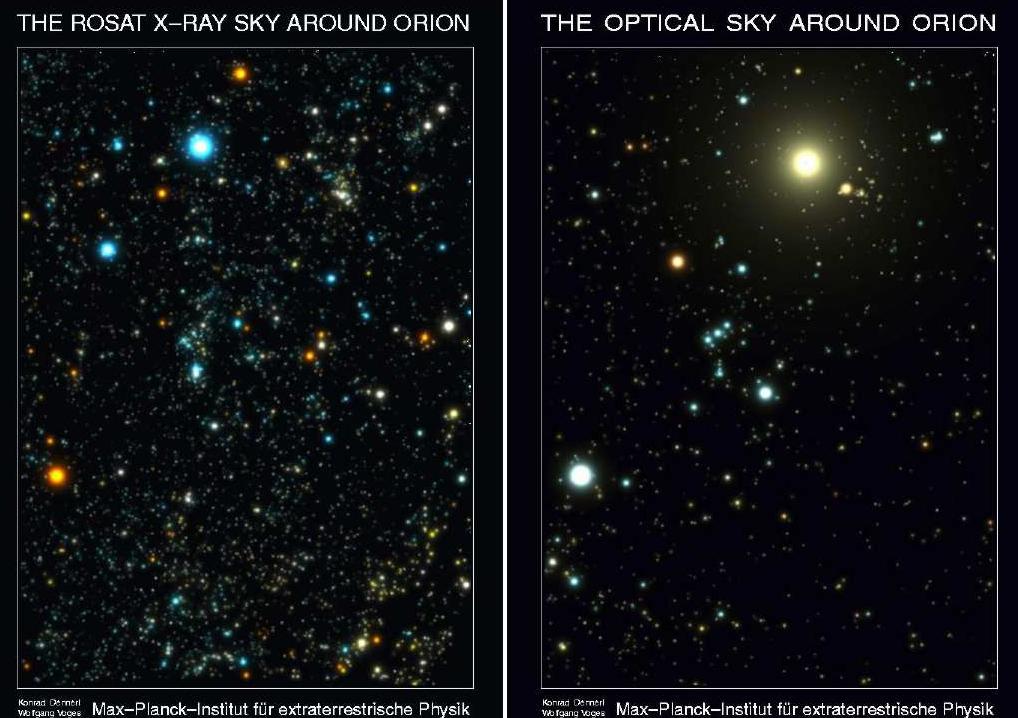
 Credit: Konrad Dennerl/Wolfgang Voges (MPE)
Credit: Konrad Dennerl/Wolfgang Voges (MPE)
Superman's View of Orion
The constellation of Orion the Hunter, is one of the most familiar sights
in the winter sky at night in the northern hemisphere. The image of Orion
(above left), with the 3 "belt" stars, the bright blue star Rigel (just
below the belt, to the lower right), bright red giant Betelguese (above the
belt to the upper left) and the Orion Nebula (the cloudy patch below the
belt and to the left) are well-known to earth-bound observers' eyes,
sensitive to visible-band radiation. But what does the sky look like to
someone like Superman, with eyes sensitive to X-ray radiation? This X-ray
view is shown by the image on the left. This image was actually obtained by
the ROSAT
satellite during the All-Sky Survey
phase in 1990-1991. The X-ray image shows the amount of very hot
(temperatures greater than 1 million degrees) gas surrounding the stars in
the Orion Nebula. This gas is generally heated by shocks as faster moving
parcels of gas collide with slower moving parcels, though magnetic heating
also plays a role. The X-ray colors represent the temperature of the X-ray
emission from each star: hot stars are blue-white and cooler stars are
yellow-red. The brightest object in the optical image is the full moon.
The full moon is visible in the X-ray image too, but it's much fainter; the
brightest X-ray source is the Crab nebula. For more information see the MPE web
page describing these images, and the accompanying finder
chart.
Last Week *
HEA Dictionary * Archive
* Search HEAPOW
* Education
Each week the HEASARC
brings you new, exciting and beautiful images from X-ray and Gamma ray
astronomy. Check back each week and be sure to check out the HEAPOW archive!
Page Author: Dr. Michael F.
Corcoran
Last modified May 26, 2001


